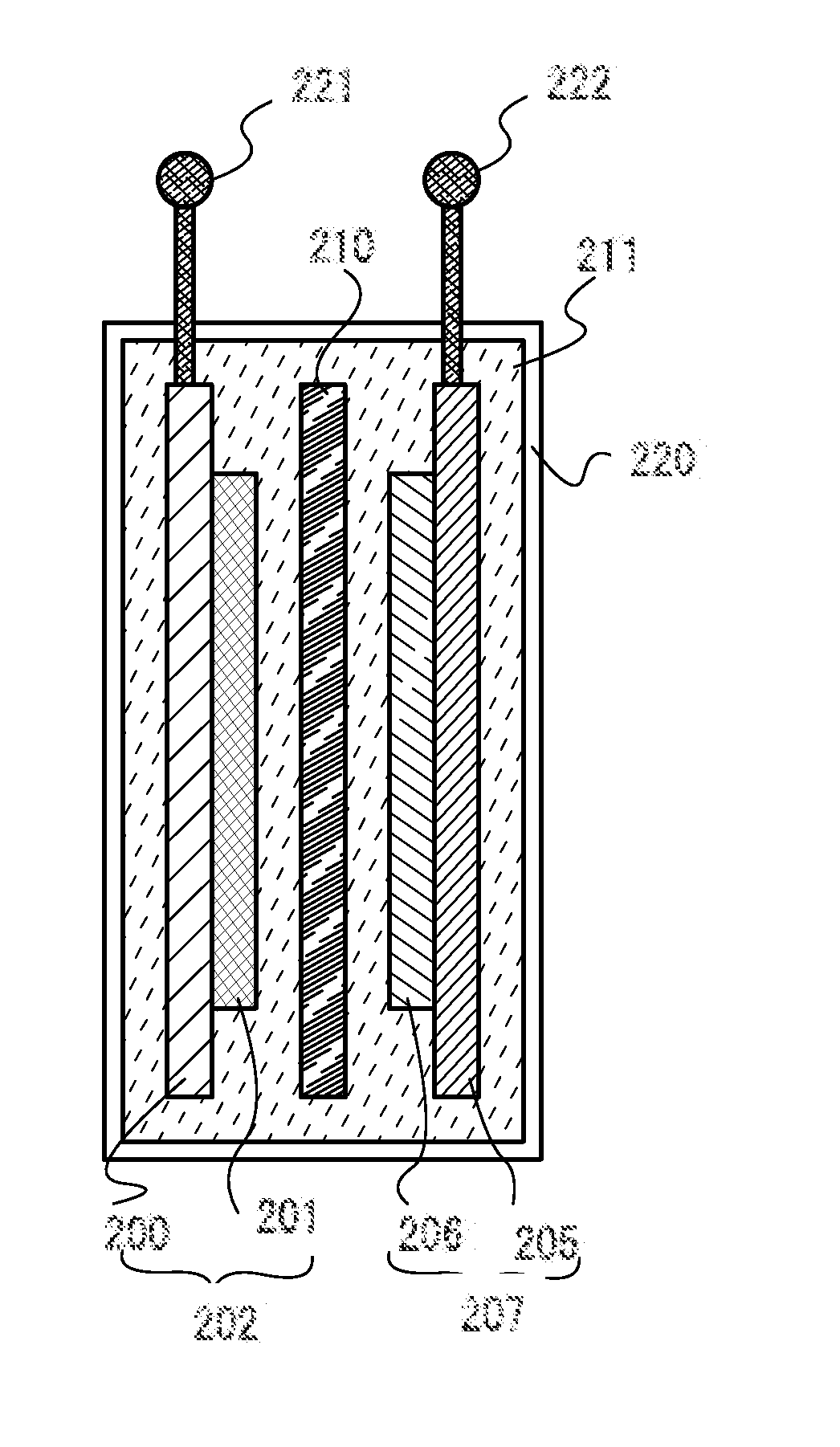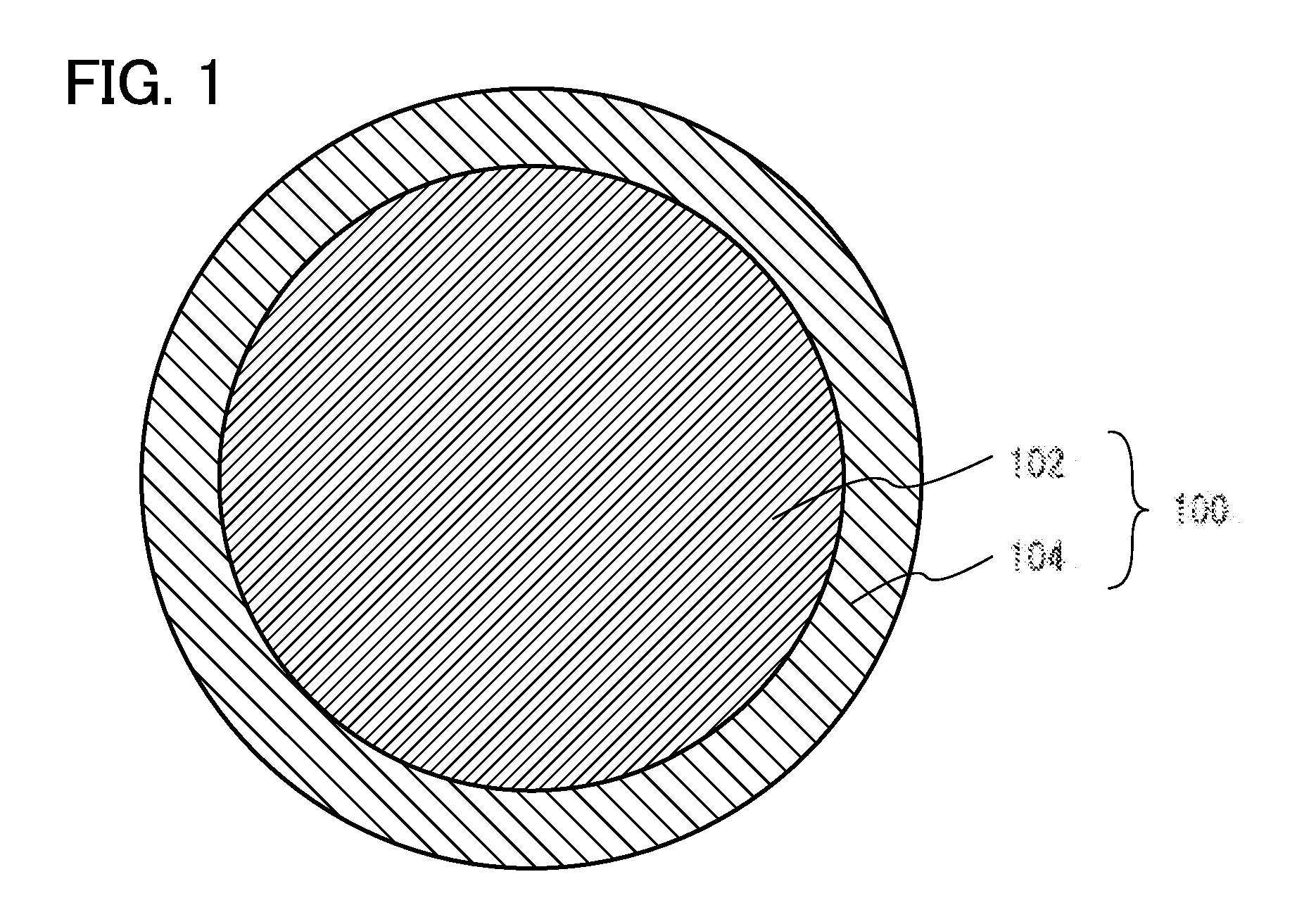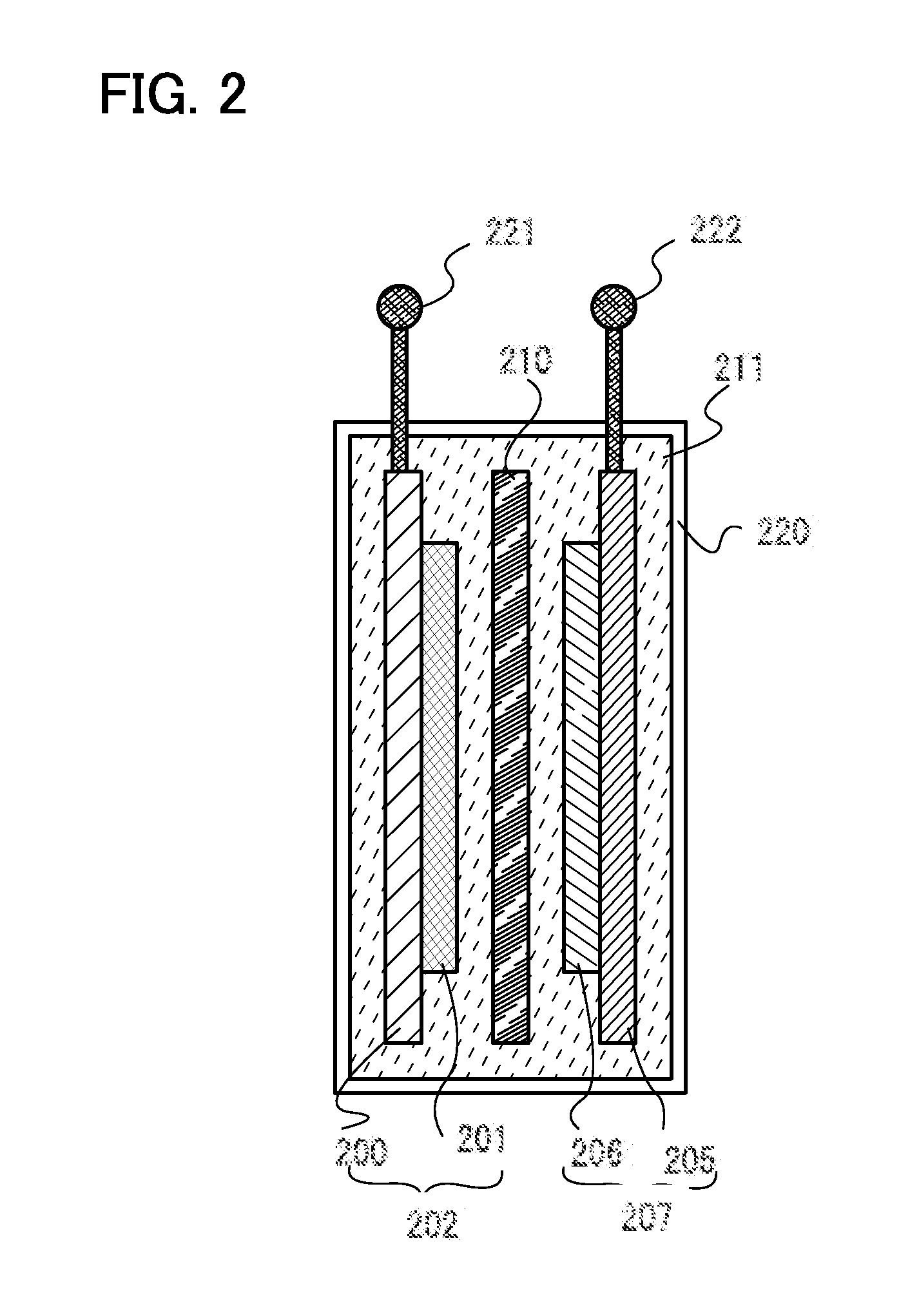Power storage device
a power storage device and battery technology, applied in cell components, electrochemical generators, transportation and packaging, etc., can solve problems such as unexpected potential, achieve high discharge voltage, reduce stress or distortion, and diffuse lithium
- Summary
- Abstract
- Description
- Claims
- Application Information
AI Technical Summary
Benefits of technology
Problems solved by technology
Method used
Image
Examples
embodiment 1
[0038]In this embodiment, a structure of a positive electrode active material which is one embodiment of the present invention will be described with reference to FIG. 1.
[0039]FIG. 1 is a schematic cross-sectional view of a positive electrode active material in particle form which is one embodiment of the present invention.
[0040]As illustrated in FIG. 1, in this embodiment, a positive electrode active material 100 includes a first region which includes a compound containing lithium and nickel (hereinafter, this region is referred to as a first region 102); and a second region which covers the entire surface of the first region 102 and includes a compound containing lithium and one or more of iron, manganese, and cobalt, but not containing nickel (hereinafter, this region is referred to as a second region 104).
[0041]The positive electrode active material is in particle form, and a positive electrode active material layer which is described later is formed using a plurality of particl...
embodiment 2
[0053]In this embodiment, a positive electrode active material having higher discharge capacity and higher energy density than the positive electrode active material in Embodiment 1 will be described.
[0054]In this embodiment, the case where both the first region 102 and the second region 104 include a positive electrode active material having an olivine structure and containing a phosphate compound is described.
[0055]A substance included in the first region 102 has an olivine structure, and includes lithium, a transition metal, and phosphate (PO4). The transition metal contains nickel and one or more of iron, manganese, cobalt, and nickel. The substance included in the first region 102 is expressed by the general formula, Li1−x1NiyMe1−yPO4 (x1 is greater than or equal to 0 and less than or equal to 1; Me is one or more of Fe, Mn, and Co; and y is greater than 0 and less than or equal to 1).
[0056]A substance included in the second region 104 has an olivine structure, and includes lit...
embodiment 3
[0060]In this embodiment, a method for forming a positive electrode active material which is one embodiment of the present invention will be described.
[0061]First, the first region 102 is formed.
[0062]The quantities of the materials at which a desired molar ratio can be obtained are weighed in accordance with the stoichiometric proportion of the general formula of the compound containing lithium and nickel, which is described in Embodiment 1 and 2. For example, in the case of the above phosphate compound having an olivine structure, the general formula, Li1−x1NiyMe1−yPO4 (x1 is greater than or equal to 0 and less than or equal to 1; Me is one or more of Fe, Mn, and Co; and y is greater than 0 and less than or equal to 1), is to be referred to. The weights of the materials are accurately weighed in accordance with a molar ratio of lithium:nickel:M:a phosphate group=1:y:(1−y):1 (note that y is greater than 0 and less than or equal to 1, preferably greater than or equal to 0.8, more pr...
PUM
 Login to View More
Login to View More Abstract
Description
Claims
Application Information
 Login to View More
Login to View More - R&D
- Intellectual Property
- Life Sciences
- Materials
- Tech Scout
- Unparalleled Data Quality
- Higher Quality Content
- 60% Fewer Hallucinations
Browse by: Latest US Patents, China's latest patents, Technical Efficacy Thesaurus, Application Domain, Technology Topic, Popular Technical Reports.
© 2025 PatSnap. All rights reserved.Legal|Privacy policy|Modern Slavery Act Transparency Statement|Sitemap|About US| Contact US: help@patsnap.com



